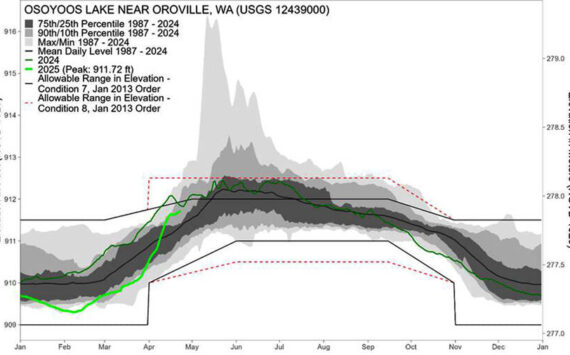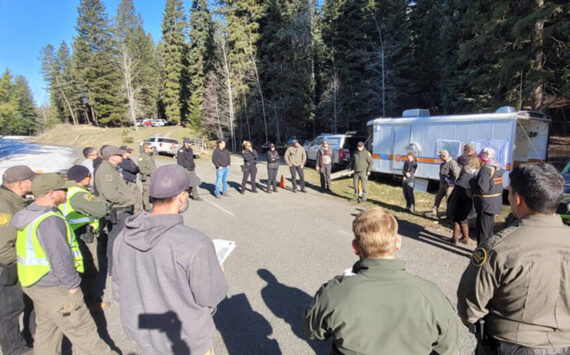Nothing compares to riding a motorcycle – for many of us it is the only way to get from Point A to Point B when the weather allows. However, even if you’re doing all you’re supposed to be doing – staying aware of everything that’s going on around you, wearing proper gear and keeping your motorcycle and equipment in perfect riding shape – it can still be a dangerous way to travel.
 The north county lost a young man last week, Brett Hendrick, a former Oroville resident who played tennis for Tonasket High School. He was riding his motorcycle near East Wenatchee when he was struck head on by a man in a pickup truck that crossed the yellow line. Hard enough to avoid in a four-wheeled vehicle, or “cage,” as some riders like to call them — nearly impossible on a bike.
The north county lost a young man last week, Brett Hendrick, a former Oroville resident who played tennis for Tonasket High School. He was riding his motorcycle near East Wenatchee when he was struck head on by a man in a pickup truck that crossed the yellow line. Hard enough to avoid in a four-wheeled vehicle, or “cage,” as some riders like to call them — nearly impossible on a bike.
According to Douglas County Sheriff Harvey Gjesdal, whose deputies, as well as officers from Chelan County and the Washington State Patrol, responded to the scene, the driver tried to flee the scene, but his vehicle was too damaged. The man has since been arrested by Douglas County for Hit and Run. He was identified as 78-year-old Joseph E. Strutzel of Monitor, Wash.
“The ultimate charging decision will be made by the Douglas County Prosecuting Attorney,” said the sheriff.
I didn’t know Brett personally, but am saddened that his life was ended at 23-years-old.
Motorcycle training teaches you to “ride like you’re invisible,” because motorists just don’t see you. But in Brett’s case even this advice wouldn’t have helped.
Logically more motorcycles are seen on Washington’s roadways during the summer months than any other time of year. And unfortunately, more motorcycle riders are involved in serious injury and fatal crashes during these months, according to the Washington State Patrol, which plans emphasis patrols, along with other law enforcement agencies, on the west side of the state. Maybe they’ll do something similar in Eastern Washington.
These patrols are focused on illegal driving behaviors by both riders and other drivers. Approximately 20 law enforcement agencies in these counties, including the Washington State Patrol, will be working overtime focused on drivers and riders who commit traffic safety violations.
These patrols are part of the Washington Traffic Safety Commission’s (WTSC) motorcycle safety education campaign known as “It’s A Fine Line.”
From 2011 through 2013, motorcycles made up just four percent of the registered vehicles on Washington’s roads, but accounted for almost 17 percent of all traffic fatalities (225 of 1327). Of these fatal motorcycle crashes, 53 percent were single motorcycle crashes where no other vehicle was involved and 78 percent were determined to be caused by the motorcycle rider.
“Motorcycle deaths are not declining like overall traffic deaths in our state,” said WTSC Director Darrin Grondel. “Motorcyclists are vulnerable road users who are over-represented in fatal crashes. We need to work together to end these tragic but preventable crashes.”
Driving under the influence (DUI), running off the road, and speeding are the main contributing factors in motor vehicle deaths. The WTSC and participating law enforcement agencies condemn profiling, the WSP says.. Trained and commissioned law enforcement officers will be conducting these patrols enforcing traffic violations as defined by Washington State laws.
For more information, visit www.targetzero.com. Additional information on the Washington Traffic Safety Commission can be found on the website, www.wtsc.wa.gov.






